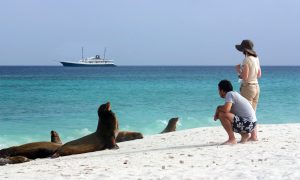Our Top 10 Picks
In early 2012, while staying at a glamping resort on a private island off the coast of Panama, my wife and I did a one-day scuba training session.
Within a few hours, we were diving in Coiba National Park, a UNESCO-protected marine reserve that forms part of the Tropical Eastern Pacific Marine Corridor. After years of snorkeling, it was an incredible introduction to scuba diving. We saw massive pods of dolphins and tuna en route, and all sorts of reef sharks, sea turtles, moray eels, and huge schools of tropical fish.
In the years since snorkeling and scuba diving have become our favorite travel activities. From snorkeling with Galapagos penguins and whale sharks to diving in Tahiti, the Philippines, Mexico, and many more countries, we’re both happier when we’re exploring the underwater world.
Here’s a look at 10 of the world’s best places to scuba dive and snorkel, including a number of exotic destinations that rank high on our personal bucket list:
1. AUSTRALIA
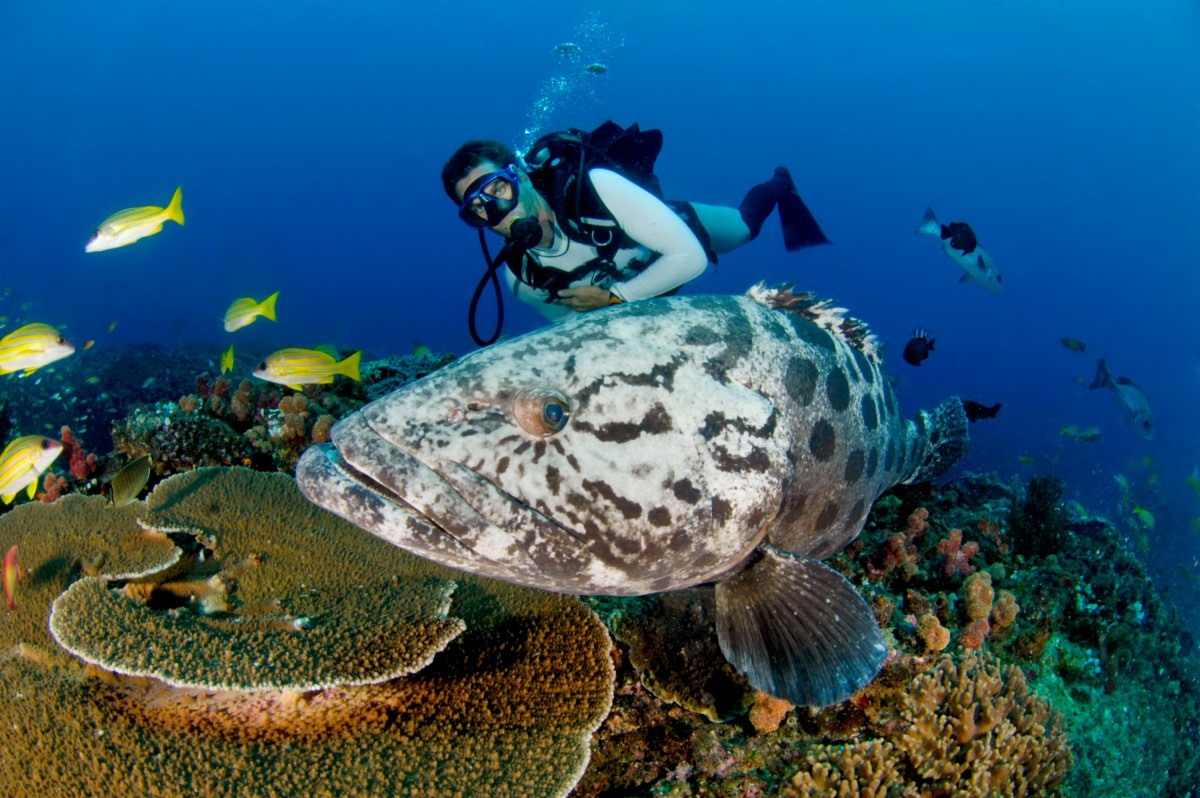
Despite clickbait headlines you might have read, Australia’s Great Barrier Reef is not, in fact, dead. Sure, it has suffered some coral bleaching as the result of rising ocean temperatures caused by climate change. But around 85% of that damage happened on a single 370-mile section, leaving 1,000+ miles of reefs and islands left to explore.
This protected UNESCO World Heritage Site remains one of the planet’s most pristine bastions of marine biodiversity. Here you’ll find 30 species of cetaceans, over 1,600 species of fish, 3,000 species of mollusk, around 125 species of sharks and stingrays, and 220 species of birds. Its islands are also breeding grounds for six species of sea turtles. Long story short, it remains the world’s most popular place to scuba dive.
Over in Western Australia, there are two prime scuba diving locations that also merit a mention. The Navy Pier (near Exmouth) extends nearly 1,000 feet from the shore and is home to marine life ranging from nudibranchs and eels to octopus, reef sharks, and massive rays.
The nearby, UNESCO-protected Ningaloo Marine Park is home to the world’s largest fringing reef, with lots of dolphins, dugongs, and whales. It’s a great place to go swimming with whale sharks, and its coastline boasts around 10,000 sea turtle nests every year.
2. BELIZE
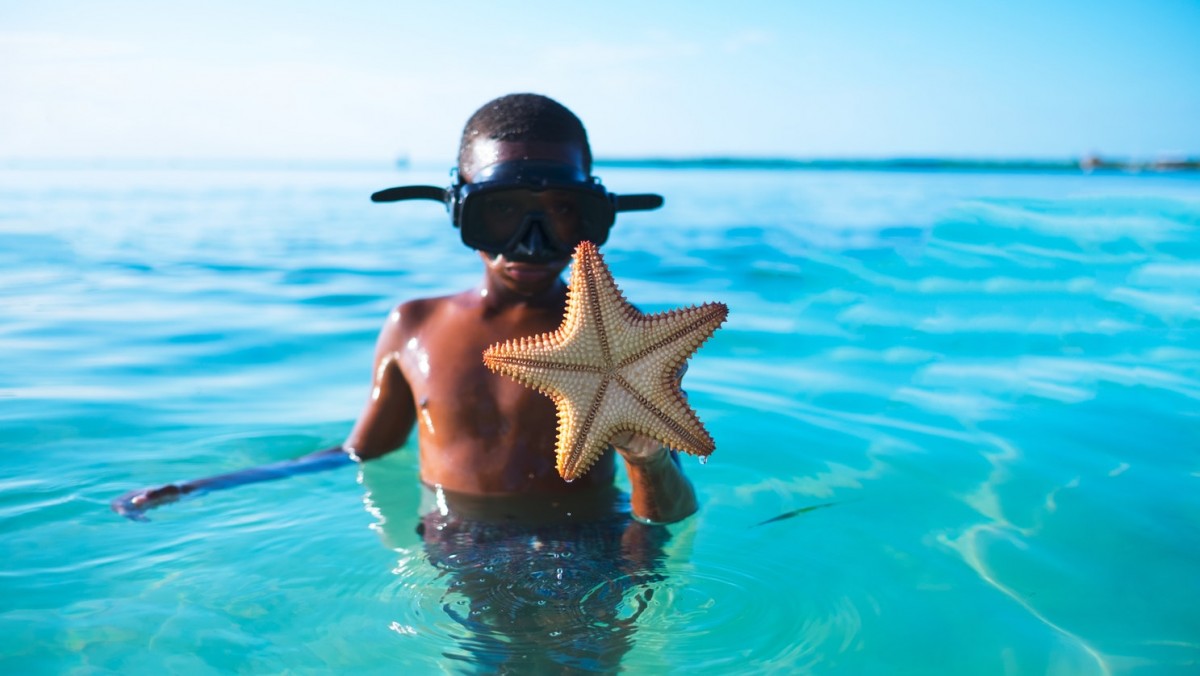
As the health of the Great Barrier Reef has become increasingly threatened by climate change, the Belize Barrier Reef has emerged as an increasingly attractive (and affordable) alternative. Some scuba experts consider it the most exceptional diving hotspot in the entire western hemisphere, with a diverse array of walls, pinnacles, and reef flats.
Belize’s reef stretches over 190 miles along the coast, comprising more than a third of the Mesoamerican Reef, the world’s second largest reef system. It includes seven marine reserves, 450 cayes (including Ambergris Caye and Caye Caulker), and three atolls.
The most famous is Lighthouse Reef, which is home to the world-renowned Great Blue Hole. This aquatic natural wonder boasts nearly 90 feet of visibility, ancient caverns filled with stalactites and stalagmites, and humongous tuna and other pelagic fish.
All in all, the Belize Barrier Reef is one of the world’s most diverse marine ecosystems, providing home to over 100 species of coral, 500 species of fish, and hundreds of invertebrates. In just two dives there, we saw lobsters, pufferfish, seahorses, spotted rays, sea turtles, reef sharks, moray eels, and countless schools of tropical fish. And thanks to Belize’s proactive marine conservation efforts, the reef was recently removed from UNESCO’s list of endangered World Heritage Sites!
3. BORNEO
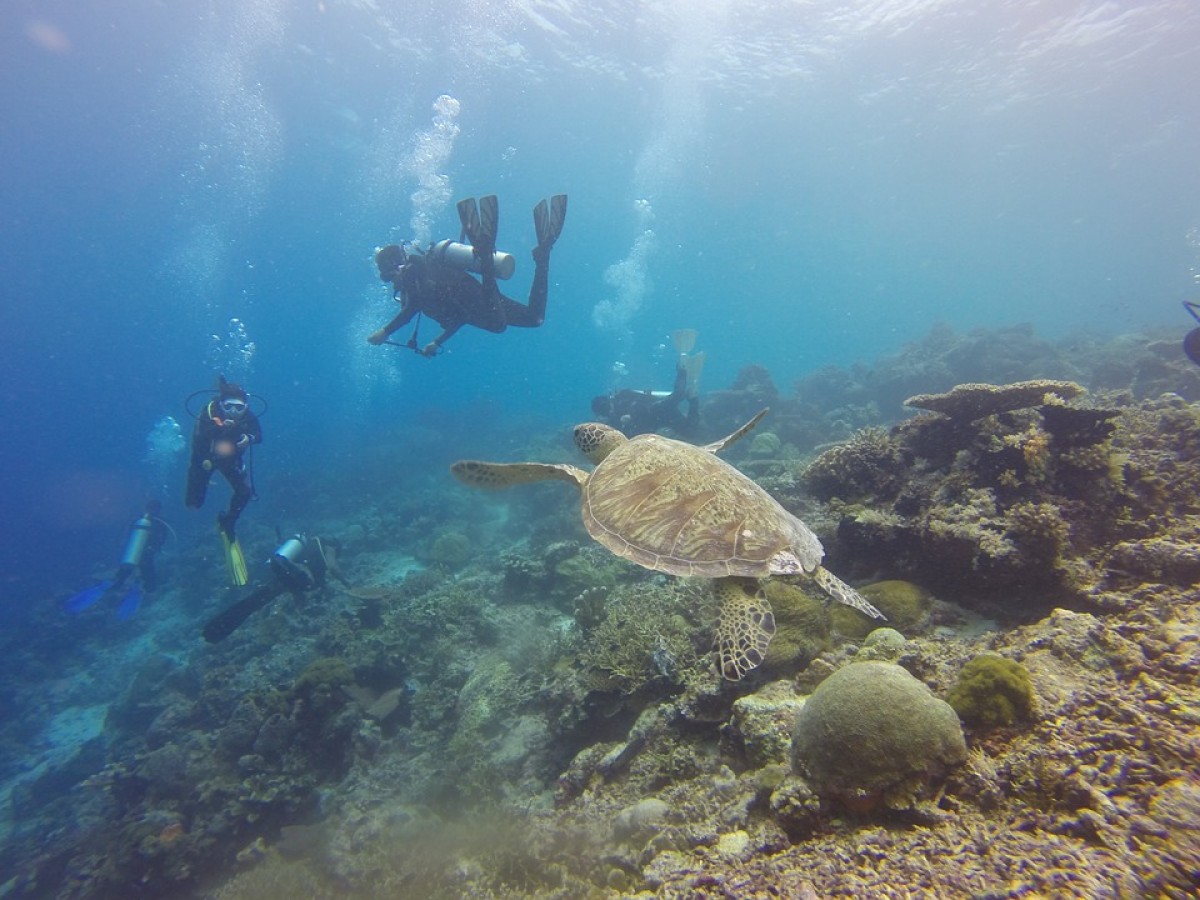
From pygmy elephants and orangutans to slow loris and tarsiers, the rainforests of Borneo are home to a stunning array of wildlife. But the biodiversity the massive island (which is shared by the Malaysian states of Sabah and Sarawak, Indonesian Kalimantan, and Brunei) is known for is perhaps even more spectacular under the sea.
Scuba diving in Borneo offers an endless array of excellent options, depending on the types of marine life you want to see. Would you prefer to find yourself surrounded by huge hammerhead sharks near the pristine coral atoll of Layang Layang, or perhaps working on your underwater macro photography skills shooting nudibranch near the islands of Mabul and Kapalai?
But for the ultimate scuba experience, head to the 30-acre island of Sipadan (Malaysia’s only oceanic island). Sipadan was created by living corals growing on top of an extinct volcanic cone, rising some 2,000 meters above the bed of the Celebes Sea. There are so many awesome scuba sites in this area, you could spend a month diving there and never get bored.
The most famous ones have colorful names such as Froggie Lair, Lobster Wall, and Turtle Cave. But several of our diehard diving friends consider Barracuda Point (whose gorgeous coral wall is also home to bumphead parrotfish, grouper, jacks, sea turtles, and white tipped reef sharks) the #1 scuba site in the world.
4. EGYPT

Egypt is not likely to be the first destination you think of when considering the world’s best scuba diving locations. After all, the country is much better known for ancient historical sites such as the Great Pyramids, Abu Simbel, and the Valley of the Kings than any offshore activities.
But the Red Sea has an impressive number of different dive sites that should guarantee Egypt a spot on any diver’s bucket list. And because the country’s past turmoil (which has been settled for years) have led many travelers to avoid visiting, you’re virtually guaranteed to have some of these incredible places all to yourself!
Those with an interest in history may enjoy diving the ruins of the Lighthouse of Alexandria, one of the original Seven Wonders of the Ancient World. It’s a shallow dive of around 8 meters, but you’ll see lots of pillars, stone chairs, and sphinxes. If marine life is more your thing, try the popular Ras Mohammed dive that starts at Anemone City before drifting to Shark Reef, with lots of pelagic fish along the way.
There are also several acclaimed shipwreck dives in the area. In Ras Mohammed, the Yolanda boasts a cargo of porcelain toilet fittings and is surrounded by colorful coral and huge schools of snapper, unicorn fish, jacks, and barracudas. The SS Thistlegorm wreck, which was discovered by Jacques Cousteau, was a British ship shot down in 1941 while laden with rifles, motorbikes, and other WWII supplies. From all reports, it merits several dives in order to fully explore the massive ship.
5. GALAPAGOS ISLANDS
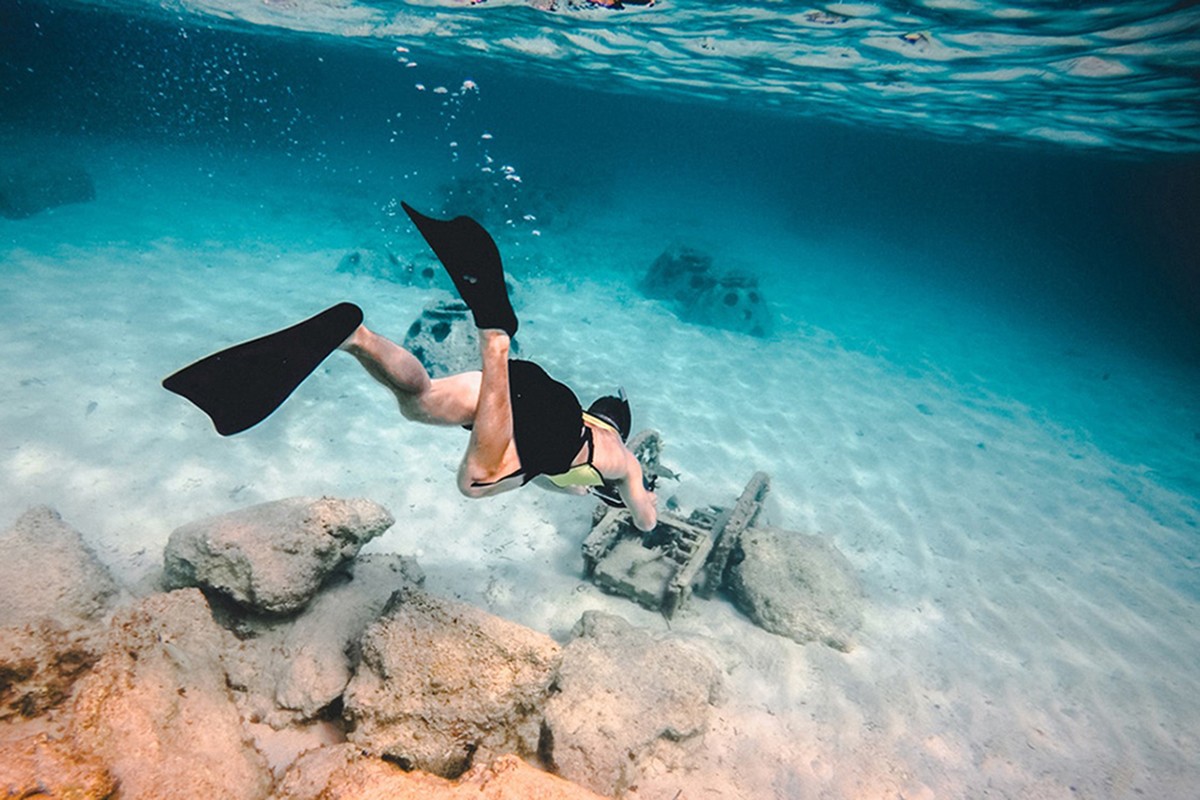
The wildlife of the Galapagos Islands is world-renowned, thanks in part to the impact the genetic adaptations among the archipelago’s finches and tortoises had on Charles Darwin’s theory of evolution. But as wondrous as the islands’ land-based animals are, the incredible array of marine life in its waters is often overshadowed.
The Galapagos Islands offer extraordinary marine biodiversity thanks to its prime location straddling the Equator, about 560 miles west of Ecuador. The nutrient-rich waters there get churned up by the warm California current from the north and the cooling Humboldt current from the south. The nutrients produced by this collision stimulate the growth of phytoplankton, which is the base of the entire ocean’s food chain.
Whenever and wherever phytoplankton flourishes, so do the area’s marine life. And since many of the Galapagos Islands don’t provide the proper nutrients on land, many of the archipelago’s most intriguing species have adapted to feed in its waters.
As a result, the snorkeling and scuba diving you’ll experience on a Galapagos cruise is second to none. You’ll be treated to incredible sightings of rays, reef sharks, hammerheads, Galapagos sea lions, sea turtles, and countless colorful fish. But you’re also likely to see animals you won’t find anywhere else, including flightless cormorants, Galapagos penguins, and marine iguanas.
6. MALDIVES
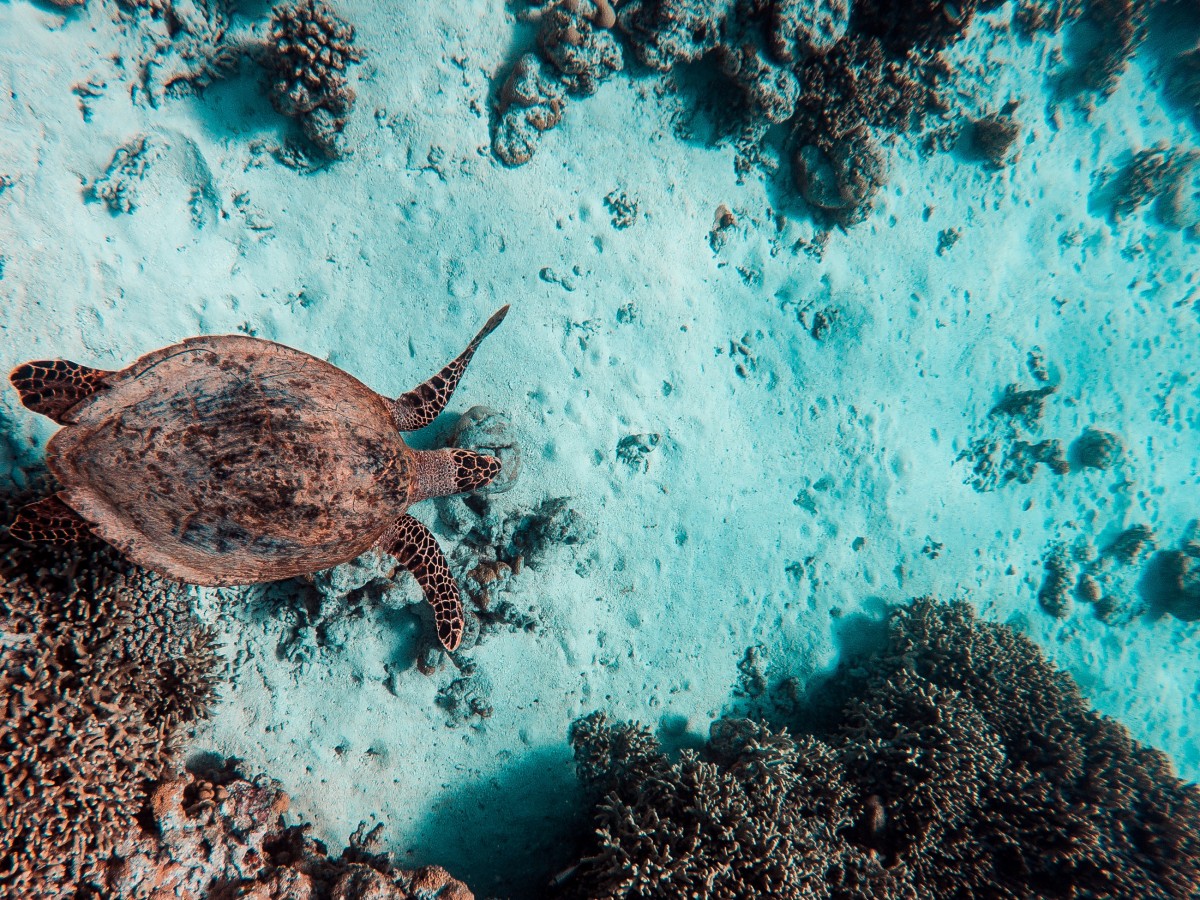
The Maldives is located in the Indian Ocean’s Arabian Sea, about 620 miles southwest of India and Sri Lanka. The chain of 26 atolls is tiny (around 115 square miles total) and widely dispersed, so taking a small ship cruise is really the ideal way to see them.
Zegrahm’s Ultimate Maldives expedition on the 26-passenger Emperor Serenity allows guests to spend 14 days exploring the area’s world-renowned underwater wonders. Beginning in Malé, the country’s capital city, the cruise heads north to the idyllic Kaashidhoo Atoll before moving counter-clockwise around the archipelago.
Highlights along the way include Rasdhoo Atoll’s Madivaru, where you’ll find schools of jacks, white-tip reef sharks, and massive manta rays attracted by a whirlpool-like current that allows them to hover in place. The Ari Atoll boasts numerous memorable sites: cross your fingers and hope for a sighting of juvenile whale sharks, which can be elusive but are present throughout the year.
You also won’t want to miss the stunning caves and overhangs of Vaataru Atoll’s Rakheedhoo Corner, where barracudas, reef sharks, and hammerhead sharks swarm in impressive numbers. Or Vaavu Atoll’s Fotteyo Kandu, where snorkelers and scuba divers alike are sure to be wowed by the sheer diversity of marine life.
7. PALAU

Part of the Caroline Islands in the western Pacific region of Micronesia, the Republic of Palau is an archipelago comprised of around 340 tiny islands with a total area of 180 square miles.
The sovereign nation is known for its forward-thinking environmental conservation initiatives. In 2005, President Tommy E. Remengesau, Jr. led the Micronesia challenge, which promised to conserve 30% of the region’s near-shore coastal waters and 20% of its forests by 2020. In 2009, Palau created the world's first shark sanctuary, banning all commercial shark fishing and protecting about 230,000 square miles of ocean.
As a result, the archipelago’s coral reef systems remain impressively pristine, and snorkeling and diving its walls and WWII wrecks are among the most popular tourist activities.
One of the most attractive scuba spots is the Blue Corner Wall, which is southwest of the main island of Babeldaob. Here you’ll find lots of large pelagic (including several species of sharks and eagle rays), with mantis shrimp, morays, and nudibranchs hiding among the coral.
8. PAPUA NEW GUINEA

Papua New Guinea is part of the Pacific’s Coral Triangle, which also encompasses the islands of Palau, the Philippines, and parts of Indonesia. Referred to by some scientists as “the Coral Crucible,” Kimbe Bay is arguably the country’s premier place for snorkeling and scuba diving.
Located in the West New Britain Province off the northern coast of Papua New Guinea, the remote area offers visitors a taste of how pristine marine ecosystems may have looked before humans came along. The reef system here is truly astonishing, with 400 types of coral, 860 fish species, and at least 10 species of whales and dolphins.
An incredible 60% of all reef species within the Coral Triangle can be found in Kimbe Bay. Underwater photographer Don Silcock compared this place to “diving in a fully stocked aquarium.”
The bay boasts dozens of impressive dive sites, including well-developed reefs near the shore and fascinating pinnacles such as Bradford Shoals, which rise up from deeper waters offshore. It may not be packed with the larger sharks and rays of some of the diving destinations on this list, but the sheer diversity of corals and marine life will blow your mind.
9. PHILIPPINES

Picking the best snorkeling and scuba diving sites in the Philippines is a bit like being asked your favorite place you’ve ever traveled, favorite book you’ve ever read, or favorite movie you’ve ever seen. There really is an endless array of options to choose from.
During our visit, we spent most of our time in Coron, Palawan, which doesn’t make most people’s lists of the country’s best snorkeling or scuba spots (unless you’re certified for wreck diving). Yet in the span of a few days we swam with dugongs (an endangered cousin of the manatee); snorkeled with giant clams, mantis shrimp, pufferfish, octopi, and reef sharks right from the beach of our private island resort; and saw 13 sea turtles and countless rays in one extraordinary day of diving.
But there are numerous other phenomenal Philippines scuba sites. Apo Reef Natural Park (a protected UNESCO site) is probably the most famous, as it’s a great place to see thresher sharks, hammerheads, manta rays, and vast schools of pelagic fish.
Tubbataha Reefs Natural Park is another UNESCO-protected site, with 360 species of coral, 600+ species of fish, 13 cetacean species, and 11 species of sharks. And Secret Bay (a.k.a. Manit Muck) in Anilao is a highly-regarded place for night dives, chock full of mantis shrimp, nudibranchs, octopi, seahorses, and more.
10. SEYCHELLES
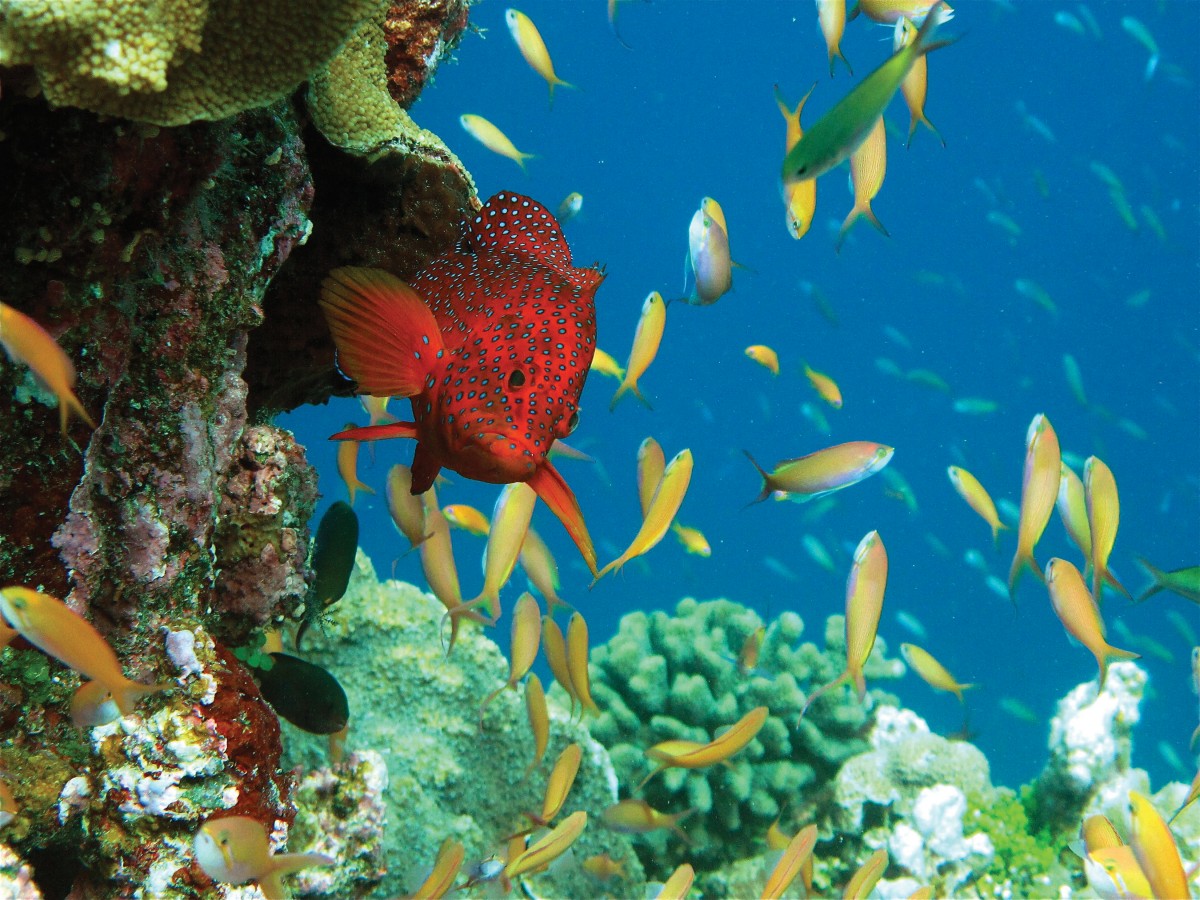
Located more than 900 miles east of mainland East Africa, the Republic of Seychelles is an Indian Ocean archipelago comprised of a mere 177 square miles of land across 115 islands. Despite having a population of fewer than 100,000 people, the country boasts one of the highest per capita GDPs in all of Africa.
Because these islands were uninhabited throughout most of recorded history, the marine environment surrounding them remains remarkably pristine. Assumption Island, best known as one of Jacques Cousteau’s favorite filming locations, boasts crystal-clear waters bustling with life. Here you can snorkel or dive with more than 100 species of fish, including black lionfish, blue-ribbon eels, and Indian Ocean steephead parrotfish.
Nearby you’ll find the enormous Aldabra Atoll, a UNESCO World Heritage Site known for its giant tortoises and other unique endemic species. Taking a drift snorkel here allows you to float through the pass between the islands and into a lagoon where you’ll be surrounded by eagle rays, sea turtles, and countless colorful fish.
But really, you can’t go wrong with snorkeling or scuba diving anywhere in the Seychelles. From snorkeling with nine different species of butterflyfish in the Alphonse Islands to exploring the reef-encircled lagoon of Desroches, every island you visit offers its own distinct pleasures. –Bret Love
BIO: Bret Love is a journalist/editor with 24 years of print and online experience, whose clients have ranged from the Atlanta Journal-Constitution and American Airlines to National Geographic and Yahoo Travel. Along with his wife, photographer/videographer Mary Gabbett, he is the co-founder of ecotourism/conservation website Green Global Travel and Blue Ridge Mountains Travel Guide.
